The selection of an Ethernet cable determines the efficiency and speed of a network connection. Among the various types available, Cat 7 Ethernet cables are noted to perform the best due to their sophisticated shielding features and support for high bandwidth-intensive activities. So, what exactly makes Cat 7 cables different? In this guide, we explore the distinguishing features, advantages, and best applications for Cat 7 Ethernet cables so you can decide if they are suitable for you. You could be in the process of setting up a new home office, updating an enterprise-level network, or wanting to increase your knowledge of new cable technologies – whatever the case, this article will equip you with the essential understanding to make an informed decision.
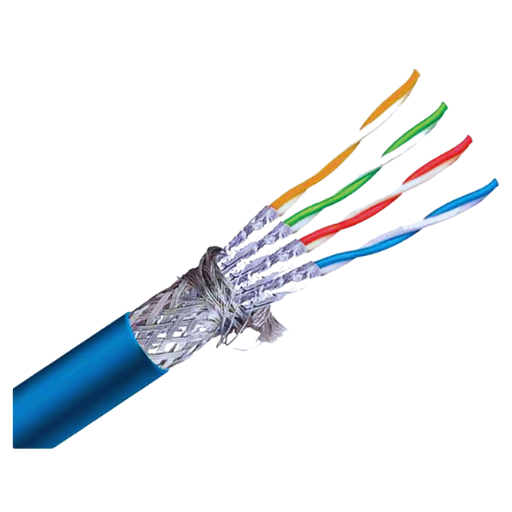
A Cat 7 Ethernet cable, or Category 7 cable, is a high-performance networking cable that can transmit data up to 10 Gbps over a distance of 100 meters. Its operating frequency is up to 600 MHz, enabling use in high-end internet applications, video streaming, as well as large data transfers. Cat 7 cables have an overall shield in addition to individual pairs to reduce interference, which makes them optimal for use in environments with high electromagnetic noise. Cat 7 cables also have backward compatibility with Cat 6, as well as Cat 5e equipment, makng them ideal for various network settings.
Supporting bandwidths of up to 600 MHz and data transmission speeds of 10 Gbps over distances of 100 meters, Cat 7 cables ensure reliable and high-speed connectivity. They come with advanced shielding, such as individually shielded twisted pairs in addition to an overall shield, to mitigate crosstalk and electromagnetic interference (EMI). Such advances make Cat 7 cables ideal for networking environments that have high-performance demands and considerable electronic noise.
The differences between Cat 7 and Cat 6a cables stem from their performance, shielding, and frequency capabilities. Frequencies and data transfer speeds of 10 Gbps over 100 meters are supported by Cat 6a cables up to 500 MHz, which is adequate for most modern networking demands. On the other hand, Cat 7 cables have improved shielding for electromagnetic interference and continue to operate at enhanced frequencies of 600 MHz, with 10 Gbps speeds over the same distance. Individually shielded twisted pairs alongside an overall shield featured on Cat 7 cables, drastically reduce crosstalk and electromagnetic interference making them most suitable for noisy electronic environments. Although both types of cables provide high-quality performance, for areas requiring more protection against interference, Cat 7 is the most appropriate.
Modern networking environments benefit greatly from Cat 7 cables, especially in the areas of performance, durability, and overall enhancement of existing infrastructure. These cables are performant too, as they can achieve speeds of 10 Gbps over distances of 100 meters and support frequencies of up to 600 MHz. These specifications make Cat 7 an excellent choice for applications that demand high bandwidth, such as data centers, high-performance workstations, and advanced home networks.
Another advantage of Cat 7 cables is the superior shielding. These cables are less susceptible to crosstalk and EM interference because they come with individually shielded twisted pairs along with an overall braided shield. This type of shielding, along with its ability to block crosstalk and EMI, allows for better performance stability even in environments with high electronic noise, like industrial facilities or rooms with numerous connected devices.
Furthermore, Cat7 cables have been manufactured to maintain backward compatibility with Cat5e and Cat6 appliances, allowing for performance flexibility. Their sturdy structure also increases strength and results in longer lower-category cable lifespans, thus improving durability and reducing replacement frequency. With the growing need for superior internet and network connectivity, the purchase of Cat7 cabling guarantees these will facilitate future technological developments, especially 4K and 8K streaming, smart home setup, IoT devices, and drones, systems integration.
For any organization or user looking for a dependable long-term solution with exceptional performance, Cat7 cables undoubtedly cater to all requirements.
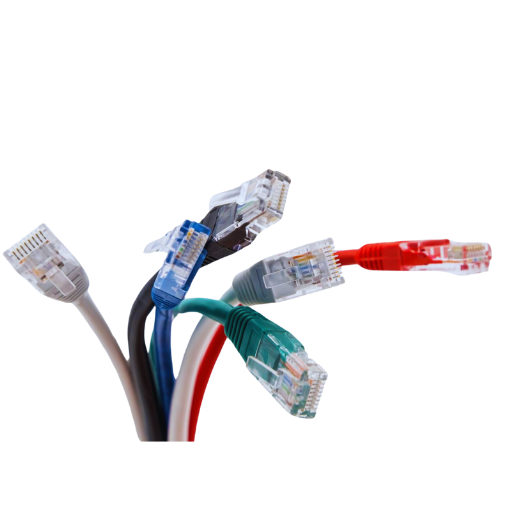
Although both Cat 7 and Cat 8 Ethernet cables are high-performance solutions, they have considerable differences in specifications, applications, and intended use cases.
1. Speed and Bandwidth
The data transfer rates for Cat 7 cables are up to 10 Gbps, with a bandwidth capacity of 600 MHz. This makes them ideal for use in home networks, small businesses, and anywhere where high-speed internet is essential. In contrast, Cat 8 cables have a bandwidth capacity of 2000 MHz and data transfer rates that exceed 40 Gbps. This exceptional performance is meant for use in data centers, enterprise-level server connections, and any environment with high demand for networking.
2. Shielding and Protection Against Crosstalk
Both Cat 7 and Cat 8 cables come with shielded twisted pairs (S/FTP) to minimize interference and crosstalk. The shielding in Cat 7 is good enough for most applications, but Cat 8 employs shielding techniques that are much more strict to preserve data integrity over shorter distances and much higher speeds.
3. Maximum Transmission Distance
A significant difference can be observed in effective transmission distance. Cat 7 cables perform optimally at distances of up to 100 meters, while Cat 8 cables have ideal transmission restricted to 30 meters at best. This is due to Cat 8 prioritizing speed and reliability over distance.
4. Applications
While Cat 7 is multi-purpose and frequently used in residential places, offices, and small to medium-scale networks, Cat 8 is designed for specialized applications such as linking servers, high-end switches, and data hubs at professional-grade facilities.
5. Cost
As with many elements of modern technology, Cat 8 costs more than Cat 7 because of its superior performance. Most businesses and private users must evaluate a network’s infrastructure before making their choice since the extra cost is not beneficial in many low-demand situations.
6. Certification and Standards
Cat 7 cables are controlled by ISO/IEC 11801 and EN 50173 which specify their use with a wide scope of applications. Cat 8 cables are controlled by the ANSI/TIA-568 standards and are certified for use in Class I and Class II balanced cabling systems.
Picking the Appropriate Cable
Consider your network environment and whether you need LAN cables for gaming when deciding on Cat 7 or Cat 8 Ethernet cables. For basic networking and long-range connections, Cat 7 is affordable and effective. However, Cat 8 excels at high-speed short-range data transfer at the enterprise level.
Evaluating if Cat 7 outperforms Cat 6 is ultimately subjective, depending on the specifications of the network in question. Unlike Cat 6, which can support bandwidths of up to 250 MHz with speeds of 1 Gbps over 100 meters, Cat 6 is more suited for standard home and office networks where moderate data transmission is needed.
In contrast, Cat 7 is a newer model which offers further enhancements in its performance. These include supporting bandwidths of up to 600MHz, as opposed to 250MHz, as well as enabling data transmission speeds of 10 Gbps over the 100-meter mark. Furthermore, Cat 7 outshines its predecessor with features such as improved shielding, with each twisted pair being enclosed in a foil shield, instead of having an additional overbraided shield as in Cat 6 cables. Such shielding makes Cat 7 more suitable for areas with high electromagnetic interference, server rooms, and advanced streaming.
Due to its affordability and compatibility, Cal 6 is unobtrusive, making it an ideal choice for people simply looking to set up a network. However, Cat 7 serves more forward-thinking and high-performance installations. Ultimately, the decision rests on your network infrastructure, even though there is no doubt that Cat 7 is outmatching Cat 6 in terms of speed, bandwidth, and durability.
Category 7 Ethernet is much more advanced than Category 5e in performance as well as the overall networking capabilities. Cat 7 is specially designed for high-speed data transfer which gives it much superiority over Cat 5e.
Data Transfer Speeds
Cat 5e: For basic internet usage and small organizations, the maximum speed of 1Gbps is more than adequate.
Cat 7: 10 Gbps speed makes Cat 7 ideal for data-intensive applications including but not limited to video streaming, cloud computing, and large-scale data transfer.
Bandwidth Capacity
Cat 5e: A low max bandwidth of 100 MHz does not allow for much growth potential.
Cat 7: Cat 7 allows for 600 Mhz which permits for a lot more data to be uploaded and transmitted, reducing latency along with lowering the distance on how far data can be sent.
Shielding and Noise Resistance
Cat 5e: An unshielded twisted pair (UTP) is prone to electromagnetic interference, stuffing environments with even basic technology makes it more complex to operate.
Cat 7: Little to no electromagnetic interference with high speeds and a stable connection makes the advanced shielding in Cat 7 clever.
Maximum Cable Length
Cat 5e: Signal degradation is almost impossible within 100 meters of standard networking and is effective for almost all scenarios.
Cat 7: Safeguards exceptional signal accuracy over longer distances and treasures maximum efficiency within a range of 100 meters.
Durability and Lifespan
Cat 5e: Intended for regular use and will likely succumb to damage more quickly under stressful conditions.
Cat 7: Built with more costly materials, like gold-tipped connectors, leading to better longevity and reliability in performance.
Compatibility with Modern Setups
Cat 5e: Works with current networking equipment, but does not support modern infrastructures beyond basic functions.
Cat 7: Incorporates new advancements in networking and emerging technologies like smart home devices as well as the Internet of Things (IoT), making it unfazed by the future.
Summary
Cat 5e is a great economical option for covering basic networking requirements. However, for users looking for high-speed, low-latency connections, especially for professional or heavy use, Cat 7 is the obvious choice. Purchasing Cat 7 is especially beneficial for staving off system networks because it possesses features such as the greater need of technology.
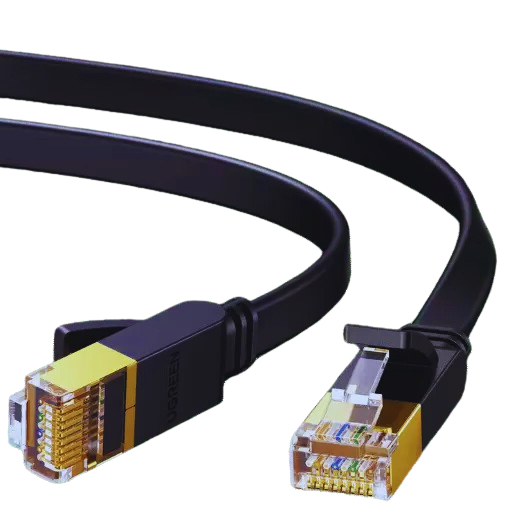
Compared to their predecessors, the Cat 7 Ethernet cables outperform the previous ones in both speed and performance. They are built to facilitate data transfer rates reaching up to 10 Gbps at a range of 100 meters; Cat 7 cables have some of the highest bandwidths available, enabling data centers, video game streaming, and even online gaming. Moreover, the individual shielding for each twisted pair as well as the overall shielding layer of the Cat 7 cables shield them from crosstalk and interference of Electromagnetic Interference (EMI) making the cables even more reliable. In conjunction with the previously mentioned benefits, these cables have the capability of transmitting data even with high electrical noise. Additionally, these cables also support frequencies up to 600 MHz which is significantly higher than 5e and ensures its use in the evolving technologies and complex network topologies.
The shielding of Cat 7 cables is critical to preventing signal degradation and distortion. It acts as a defense mechanism against external sources of electromagnetic interference (EMI) as well as diminished pair-to-pair crosstalk that can lower the standard of data. With these properties, the shielding guarantees accurate and consistent data transmission in environments where electrical noise is elevated, like industrial areas or data centers. Incorporating individual pair shielding and an overall shield allows Cat 7 cables to outperform other cables and, therefore, these cables are ideal for high-speed networking applications.
The use of CAT 7 cables is justified by their sturdy build along with the quality materials used which gives them a prolonged lifespan. They have reliable shielding and insulation which defend against mechanical damages and weather conditions including moisture or temperature changes. Their durable construction reduces the frequency of replacements needed, which helps save costs on networking infrastructure. Moreover, their strong durability against interference and decrease in performance further guarantee efficiency after prolonged use. These factors make CAT 7 cables useful for harsh environments and continuous functioning within vital systems.
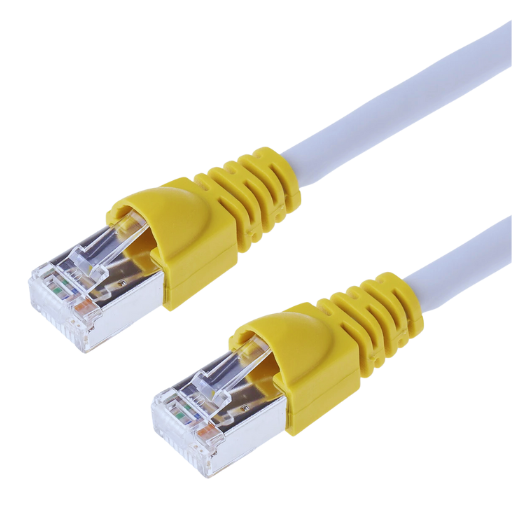
It is essential to ensure the compatibility and performance of the chosen RJ45 connectors with Cat 7 Ethernet cables. The connectors for the cables must be designed to ensure data transfer speeds, which can reach upwards of 10 Gbps, as well as bandwidths of 600 MHz, are met without compromising the signal integrity.
Some of the considerations include:
Shielded RJ45 connectors are mandatory for Cat 7 cables as they are individually shielded, and therefore require protection against interference such as crosstalk or electromagnetic interference (EMI). These connectors usually come with metal shielding and ground connectors to allow integration with the cable’s shielding.
Gold-plated connectors are recommended due to gold’s properties, which include excellent conductivity as well as corrosion resistance, ensuring the data is transmitted reliably through the connectors for a long period, even in humid environments.
To maintain compatibility with network devices, pin configuration standards should be TIA/EIA-568 wiring standards like T568A or T568B if the assigned logic is to be followed. Proper standards have to be followed to prevent adverse connection problems as well as performance problems.
Cable Compatibility
Due to the shielding, Cat 7 cables are slightly thicker than other types of cables. Because of this, they require specific RJ45 connectors. Connectors designed especially for Cat 7 or Cat 6a/7 cables often feature larger entry gaps and stronger clamps for ease of use.
Durability and Strain Relief
RJ45 connectors boasting stronger designs are ideal for long-term use as they provide proper strain relief. These parts lessen the mechanical load placed on the cable during standard usage and installation, thus providing a lower chance of damage.
If these claims are satisfied, your Cat 7 Ethernet cable installations are sure to have ideal performance and durability while preserving the speed and absence of interference expected from this high-level standard.
Verify Compatibility
To safeguard performance and reduce interference, I confirm that all parts, including RJ45 connectors, keystone jacks, and patch panels, are compliant with Cat 7 standards.
Proper Cable Termination
I make sure to maintain uniformity on both ends of the cable by adhering to T568A or T568B wiring standards for cable terminations to avoid connection problems.
Avoid Tight Bend Radii
To prevent the Cat 7 cable from being damaged physically or losing signal, I ensure that the minimum bend radius is not exceeded.
Maintain Shielding Integrity
I guarantee that all the shielding which is at the ends is grounded so that the EMI is minimized.
For networking installation, it is vital to select the right outdoor Ethernet cables to guarantee the needed strength and ensure the performance does not fluctuate. Outdoor Ethernet cables are intended for use in the outdoors. Their construction includes a weather-resistant jacket along with UV protection which means these cables can handle plenty of exposure to harsh environmental elements for a good period.
1. Cable Jacket Material
Outdoor Ethernet cables are designed with polyethylene outer jackets which guard against moisture, physical abrasion, and temperature extremes. Make sure the jacket comes with a direct burial rating if you intend to place the cables underground since it protects the soil and other external damage.
2. Shielding and EMI Protection
Electromagnetic interference is a problem during outdoor installations and therefore shielding is recommended. When placing cables around power lines or other electronic appliances, outdoor cables with shielding like FTP (Foiled Twisted Pair) or S/ FTP (Shielded and Foiled Twisted Pair) should be utilized.
3. UV and Weather Resistance
Standard Ethernet cables can get damaged from prolonged exposure to sunlight. However, the outdoor-rated cables are designed with materials that are resistant to UV impact, which means they do not crack or get damaged over time. Hence, these cables have a longer operational lifespan in environments that get direct sunlight.
4. Tolerance of Temperature
Reliability of outdoor Ethernet cables in extreme temperatures is a must. Most outdoor-rated Cat 6 and Cat 7 cables work well at temperatures from -40°F to 167°F (-40°C to 75°C) which ensures connectivity in the harshest of climates.
5. Compatibility of Power Over Ethernet (PoE)
In the case of security cameras or wireless access points that are located further away from a building, installing those devices becomes easier with PoE-compatible Ethernet cables because data and power are conducted through one cable. This makes installations easier and cheaper.
6. Signal Integrity vs. Distance
It is important to note that the furthest range an Ethernet cable can transmit data is 100 meters, which is roughly 328 feet. Longer distances can be achieved, but performance will need signal extenders or network switches.
If these points are kept in mind, one will be able to efficiently set up a long-lasting external network with the right outdoor Ethernet cables.
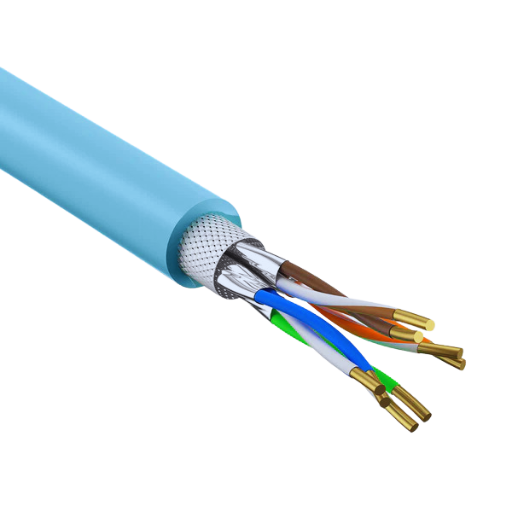
For reliable Ethernet Cables, the Amazon Basics RJ45 Cat 7 ethernet cable is optimal due to its quality and affordability. In addition, it comes with a PVC jacket which protects it from wear-and-tear, bordering environmental factors. The cable is also suited for high-speed connections with a bandwidth of 600Mhz and data transfer of up to 10Gbps.
Features:
Each pair of wires is shielded with FTP (Foiled Twisted Pair) technology, eliminating electromagnetic interference (EMI) and crosstalk, making the connections more stable.
Gold-plated RJ45 connectors help improve long-term performance as it increase signal integrity while also reducing corrosion.
The flat profile of the cable makes it easier to install in tight spaces while simultaneously reducing the chances of tangling.
When it comes to choosing the right Ethernet patch cables, Cable Matters always delivers for your network needs. The Cat 7 Ethernet Cable also provides the same benefits with its 10Gbps and 600Mhz bandwidth. Unlike the basics version, this one offers higher durability and resistance thanks to the added braid-shielding.
Jadaol Cat 7 Ethernet Cable
Along with doing its job, a Jadaol cable will also look good on display thanks to its flat aesthetic. Their thin profile makes these cables ideal for running along walls or under carpets. On top of that, they offer strong shielding as well.
Vandesail Cat 7 Ethernet Cable
Vandesail cables are the best for your budget, as these are the cheapest without any performance sacrifices. Along with affordability, these also offer 10 Gbps speeds with robust shielding to ensure consistent connectivity.
|
Brand |
Bandwidth |
Speed |
Shielding |
Design |
Price Range (USD) |
|---|---|---|---|---|---|
|
Amazon Basics |
600 MHz |
10 Gbps |
FTP |
Flat |
$10 – $20 |
|
Cable Matters |
600 MHz |
10 Gbps |
Braided & Shielded |
Round |
$15 – $30 |
|
Jadaol |
600 MHz |
10 Gbps |
Shielded |
Flat |
$12 – $25 |
|
Vandesail |
600 MHz |
10 Gbps |
Shielded |
Round |
$8 – $18 |
By comparing these brands, you can choose the best product tailored to your specific networking requirements, balancing performance, durability, and budget considerations.
In choosing an Ethernet cable, understanding how the cable length affects network performance and signal quality is important. For use in residential or office network applications, cable lengths in the range of 10-50 feet are common and reduce the chance of incurring slack. Ethernet cables are usually available within the domain of 1 foot to more than 300 feet. Cables of shorter lengths almost always outperform longer cables due to lesser signal degradation.
Apart from length, the cable’s width can prove to be equally important. Most pertinent is the ratio of bandwidth to speed, which Cat 7 cables are readily available with at 600 MHz and 10 Gbps. While these cables may be proficient in performing heavy multitasking functions like video calls, data-based applications, and gaming, users with slightly more demanding needs like server networking or catapulting towards higher network requirements in the future may resort to Cat 8 cables which exceed 2,000 MHz and 40 Gbps.
Moreover, knowing the surroundings in which the cable is going to be utilized is very important. For instance, FTP and S/FTP cables are preferred in heavily impacted areas of electromagnetic interference (EMI), while UTP cables work fine in less EMI-disturbed places. All of these considerations will make sure the optimal length and capacity are provided for your networking needs.
When buying Ethernet cables, striking a fair balance between price and quality can be tricky. While a budget-friendly option looks appealing, it can be unacceptably low in durability, performance, or compatibility. For example, inexpensive cables are likely to be unsuitably shielded and, hence, increase vulnerability to electromagnetic interference (EMI) which would ultimately jeopardize the stability and speed of the connection. Conversely, premium cables manufactured by reputable vendors are often put through rigorous testing for them to meet the industry standards which results in enhanced performance and longevity.
Market data suggests that Ethernet cables differ greatly in prices, not just because of features, but due to shielding, bandwidth capacity, and even speed rating of parts. For instance, Cat 5e cables are often priced between five to fifteen dollars for a ten-foot length while Cat 7 cables go from fifteen to thirty dollars for the same length. The Cat 8 cables which are built to cater for higher demand are often above forty dollars for the less than ten-foot length as a result of their superior shielding and bandwidth.
Long-term investment in higher-quality cables can ultimately reduce the need for frequent replacements since they would be more capable of withstanding the wear and tear of network demands. In attempting to optimize the budget, one should not only look at the initial spending but also the longevity and the advantages of the performance of the cable.
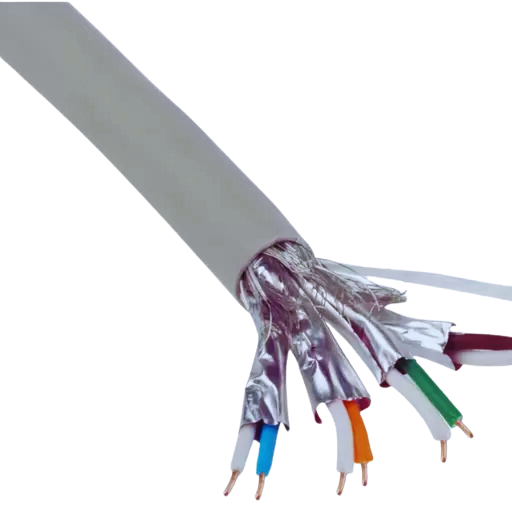
A: A Cat 7 Ethernet cable is defined as a high-performance cable owing to the shielding and frequencies it possesses compared to Cat 6 and Cat 6a. This cable serves a bandwidth of up to 10 Gbps at a frequency of up to 600 MHz, thus making it most effective for high bandwidth usage. Unlike Cat 6 or Cat 6a, Cat 7 or Super Fast Ethernet cables are always shielded, utilizing a newer GG45 connector which is backward compatible with traditional RJ45 connectors.
A: Using Cat 7 Ethernet cable possesses multiple advantages over Cat 6, the difference ranges from better shielding from electromagnetic interference to higher bandwidth capacity and better distance performance. In the case of comparison to Cat 8, Cat 7 is more affordable as well as the best suited for the average home and office environments while Cat 8 is primarily built to be used in data centers, thus negatively impacting its efficiency for extreme use.
A: Cat 7 Ethernet cables are fully compatible with existing network equipment utilizing RJ45 connectors, so yes, they are supported. While Cat 7 cables are primarily designed to work with GG45 connectors, they are still able to function with standard RJ45 ports found on most routers, switches, and network interface cards. However, to take advantage of the full capabilities of Cat 7 Ethernet cables, both ends of the network need to support the higher specifications.
A: Yes! Using a Cat 7 Ethernet cable for gaming or streaming 4K content is superb. They are ideal cables for gamers because Cat 7 Ethernet cables have high bandwidth capacities of 10Gbps with low latency which allows for lag-free gaming and smooth streaming of content. As a result, Cat 7 Ethernet cables are compatible with gaming PCs, stabilizing fast online gaming and media consumption.
A: Just like Cat 6 and Cat 6a, the maximum recommended length of a Cat 7 Ethernet cable is 100 meters, or 328 feet. While it is possible to find Cat 7 Ethernet cables that are over 100 ft, it is important to keep in mind that the further the distance, the more signal degradation will occur. To mitigate the degradation, it is advisable to use shorter cable runs where possible.
A: Normally, Cat 7 cables aren’t meant for outdoor use, but there exist certain kinds of Cat 7 cables known as outdoor Cat 7 cables. These cables have supplementary shielding against moisture, UV rays, and extreme temperatures. When it comes to installing ethernet cables outside, one needs to use exactly those that are rated for external use if network performance and cable longevity are to be maintained.
A: For a copper-based network, Cat 7 Ethernet cables give great performance, but in general, fiber optic cables perform better in terms of speed and distance. Though Cat 7 offers up to 10Gbps speeds over 100 meters, fiber optic cables offer significantly higher speeds at greater distances. Still, for most small business and home computer systems that don’t need extreme distance and speed, Cat 7 cables are the most economical and easiest to install.
A: If you need more bandwidth, better shielding from interference, or both, upgrading from Cat 6 to Cat 7 ethernet cable may be worthwhile. If you have a standard home network, Cat 6 should be more than adequate as it supports speeds up to 1Gbps. However, if you do large file transfers, high-end gaming, or expect to need faster speeds in the future, upgrading may be an option worth considering. With that said, remember to assess your needs and budget before making a decision.
1. Production and Measurement of Cat. 7 Cable
2. Evaluation of CAT-7 Cables for Analogue Signal Transport in the Square Kilometre Array Project
3. A Fully-Integrated Adaptive Temperature-Compensating Ethernet Equalizer for Automotive Applications